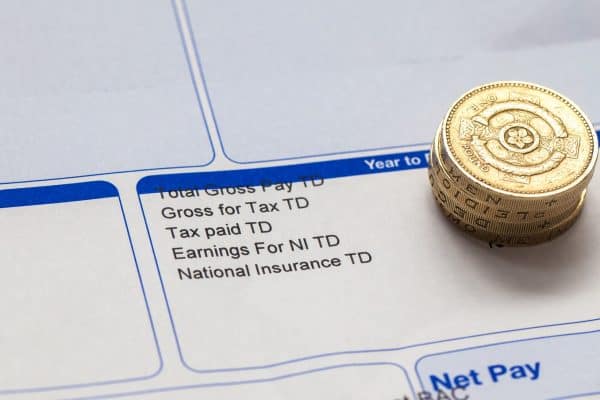You’ve just been paid and have a set amount of money for the month, you know you have to save a certain amount, but you can’t help but treat yourself. While there is nothing wrong with a little self-love, constant impulse buying can bring down your savings each month. To help encourage spending less on nonessential purchases, why don’t you follow the 30-day savings rule. Here we’ll go through how this 30 day rule works and how it’ll help you save each month.
What Is The 30-Day Rule?
Also known as the 30-day spending rule, it’s to help stop impulse buys by letting you reflect and truly think whether you need it or want it. Impulse buys are where you see something you want to buy, and you find yourself buying it based on that one moment rather than thinking about your budget. This can throw off your budget or even cause you to build debt if you spend too much or become too reliant on ‘buy now pay later’ schemes.
Instead of buying it outright, the 30-day impulse spending rule is all about taking 30 days to think about it. Note what it is, where you can buy it, how much it costs and whether it’s what you truly need or a want. This also helps you reflect on whether it will be a waste of money or if it’ll be worth spending your money on this.
The overall goal of the 30-day savings rule is to become more aware and intentional about how you spend, and how you save. In the meantime, while mulling over this purchase, start to put money aside for that item in a savings account. If in a months’ time you still want to purchase this item, then you know you have the funds to do so. If you no longer want the item, you’ve managed to save money anyway, naturally building your savings account.
How The 30-Day Saving Rule Works
This money saving rule is a great way to help you motivate yourself to increase your savings. This is because while taking the time to consider if your impulse buy is worth it, you’ll be putting money into a savings account for it. And if you don’t end up buying it, you’re just pocketing money. Where if you decide to buy it, you know you can afford it without breaking the bank.
And even better, when you consider your savings, financial goals and the money you saved by using this method of saving money it creates a sense of security. You know that you’ve accounted for your needs, wants and savings whether you buy it or not.
Tips On Using The 30-Day Savings Rule
- Make a wish list: When you’re tempted to buy something, put it in a wish list. Whether that’s a wish list or saved for later on a website, or what I like to do is put it in my notes app on my mobile. Take images of things in stores or copy the page URL where I found what I wanted to buy, and paste it all into a note in your phone. This is a great way to track what you wish to buy.
- Rank financial goals: This can help you prioritise what you may or may not have budgeted for this month and help you organise what you need money for this month. Consider how your wish list items compare to other financial goals or needs. Where would you rather spend your money?
- Use a budgeting app: These are great to help you save money and can give you insights into your current spending habits. As well as helping you create a budget based on your wants, needs and saving goals.
- Boost your savings with a savings account: Consider using a high-yield savings account, ISA or other saving methods where you can earn more interest than a regular savings account. You also don’t have to stay with your current bank, shop around as there might be better deals.
- Treat yourself: The goal of the 30-day rule isn’t to stop you from treating yourself, it’s to help you save money and be more mindful of what you are spending. You’re allowed to treat yourself every now and then, so don’t forget to give yourself the love you deserve.
Other 30-Day Savings Challenges
The 30-day spending rule can often be compared to other 30-day saving challenges. A whole month is a helpful time frame to save money and it coincides with most people’s payday schedules.
Here’s some more 30-day money challenges that you can consider alongside the 30-day rule:
- Saving Spare Change: During the month see how much spare change you can save from purchases. You can do this manually or many banks and budgeting apps do this for you. Round up your purchase to the nearest pound and deposit the difference in your savings account, over the 30 days this will add up.
- Save £465 in 30 days: This fun method of saving money is easy. The first of the month put £1 in your savings fund, and increase the amount every day by one. So, day 2 is £2, day 3 is £3, and so on. On the 30th day, you would have saved £465.
- No dining out challenge: Set yourself a challenge for 30 days not to eat out, this includes your takeout coffee, takeaway and eating out. This can also give you insight into how much you spend on dining out during an average month. Eating at home or finding ways to save on meal planning can help you save a lot more than you might think.
Read more: Money Hacks To Boost Your Savings
Grow Your Savings With The 30-Day Rule
Waiting a month before making an impulse purchase can help you understand your wants vs your needs and be more mindful of your spending. Knowing fully what is worth a purchase and what isn’t, while putting away money for it anyway will naturally save you more money. When used with a budgeting plan, saving tools, and other money-saving tips, the 30-day saving challenge can make a big difference each month.
Want to know more money-saving tips and challenges tips, take a look at our Good Vibes blog.




















